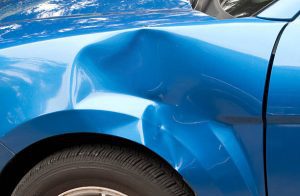DIY Car Scratch Repair Techniques


DIY Car Scratch Repair Techniques


Introduction
Car scratches are an inevitable part of owning a vehicle. Whether it’s a minor scrape from a parking lot mishap or a more noticeable scratch, they can be unsightly and diminish the overall appearance of your car. While professional repair services are available, they can be expensive. Luckily, there are several DIY car scratch repair techniques you can try at home. In this article, we will explore step-by-step methods to help you effectively repair minor scratches and restore your car’s finish.
Assessing the Scratch
Before you begin any repair work, it’s important to assess the severity of the scratch. There are generally three levels of scratches:
- Clear Coat Scratch: These scratches only affect the clear coat layer, which is the topmost layer of protection on your car’s paint. They are the easiest to repair.
- Primer Scratch: These scratches penetrate the clear coat and reach the primer layer underneath. They require a bit more effort to repair.
- Deep Scratch: These scratches extend into the base coat or even the metal body of the car. Deep scratches may require professional help to repair effectively.
For the purpose of this article, we will focus on DIY techniques for repairing clear coat and primer scratches.
Tools and Materials Required
Before starting the repair process, gather the following tools and materials:
- Microfiber cloth
- Mild car soap or dish soap
- Water
- Sandpaper (2000-grit and 3000-grit)
- Rubbing compound
- Polishing compound
- Car wax or sealant
- Soft cloth or foam applicator pad
- Touch-up paint (for primer scratches)
Step-by-Step Process
Step 1: Clean the Area
Start by thoroughly cleaning the scratched area and its surrounding surface. Mix mild car soap or dish soap with water to create a soapy solution. Dip a microfiber cloth into the solution and gently clean the scratched area, removing any dirt, debris, or wax buildup. Rinse the area with clean water and allow it to dry completely.
Step 2: Assess the Depth of the Scratch
Use your fingertips to determine the depth of the scratch. If your fingernail catches on the scratch, it is likely a primer scratch. If your fingernail does not catch, it is most likely a clear coat scratch.
Step 3: Repairing Clear Coat Scratches
For clear coat scratches, follow these steps:
Step 3.1: Sanding
Wrap a small piece of 2000-grit sandpaper around a sanding block or your fingers. Wet the sandpaper with water and gently sand the scratched area in a back-and-forth motion. Keep the area lubricated with water throughout the process. Sand until the scratch becomes smooth and blends with the surrounding surface.
Step 3.2: Polishing
Apply a small amount of rubbing compound to a clean microfiber cloth. Gently rub the compound onto the sanded area in a circular motion. Continue until the compound blends the scratch with the surrounding clear coat. Wipe off any excess compound with a clean cloth.
Step 3.3: Waxing
Apply a small amount of car wax or sealant to a soft cloth or foam applicator pad. Apply the wax to the repaired area, using gentle, circular motions. Allow the wax to dry according to the manufacturer’s instructions, and then buff it off with a clean cloth, revealing a smooth and shiny surface.
Step 4: Repairing Primer Scratches
For primer scratches, additional steps are required:
Step 4.1: Touch-up Paint
Clean the scratched area again and ensure it is dry. Shake the touch-up paint bottle vigorously to mix the paint. Apply a small amount of touch-up paint to a fine-tipped brush and carefully fill in the scratched area. Be precise and try to match the color as closely as possible. Allow the paint to dry completely according to the manufacturer’s instructions.
Step 4.2: Sanding
Once the touch-up paint is dry, use 3000-grit sandpaper and water to gently sand the repaired area until it is level with the surrounding surface. Keep the area wet and check the progress regularly to avoid over-sanding.
Step 4.3: Polishing and Waxing
Apply a small amount of polishing compound to a clean microfiber cloth. Gently rub the compound onto the sanded area, using circular motions, until the repair is blended seamlessly. Wipe off any excess compound and proceed to apply car wax or sealant as mentioned in Step 3.3.
Conclusion
Repairing minor car scratches can be a rewarding and cost-effective DIY project. By following these step-by-step techniques, you can effectively repair clear coat and primer scratches, restoring your car’s finish and enhancing its appearance. Remember to assess the depth of the scratch before proceeding with the appropriate repair method. While these techniques work well for minor scratches, it’s important to seek professional help for deep scratches or if you’re unsure about handling the repair yourself. With proper care and maintenance, your car’s exterior will stay in great condition, ensuring a polished and appealing look for years to come.








